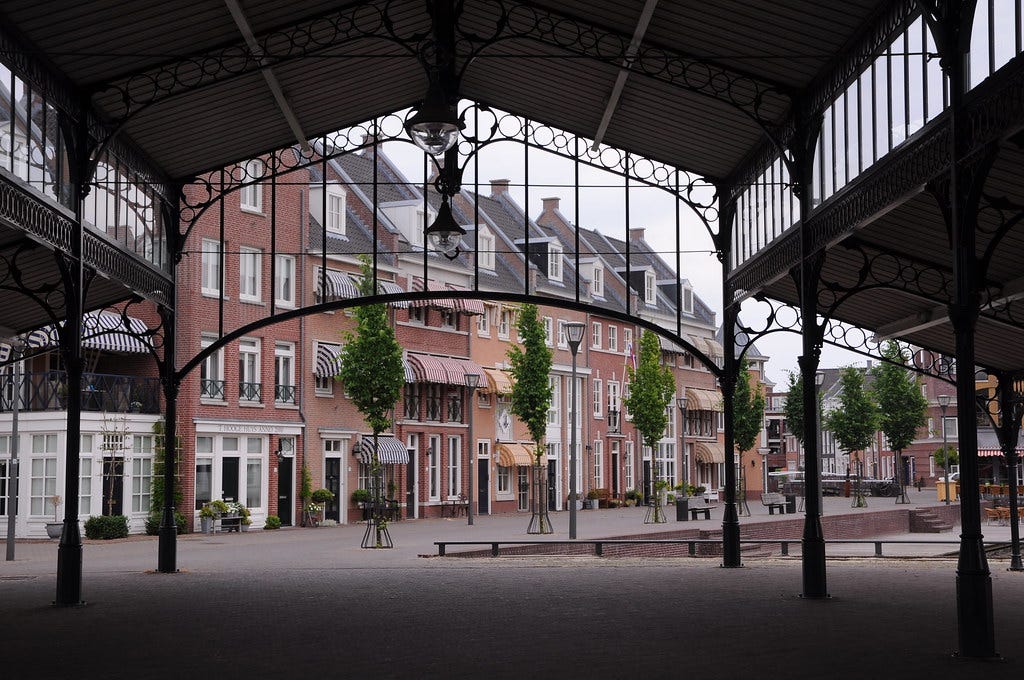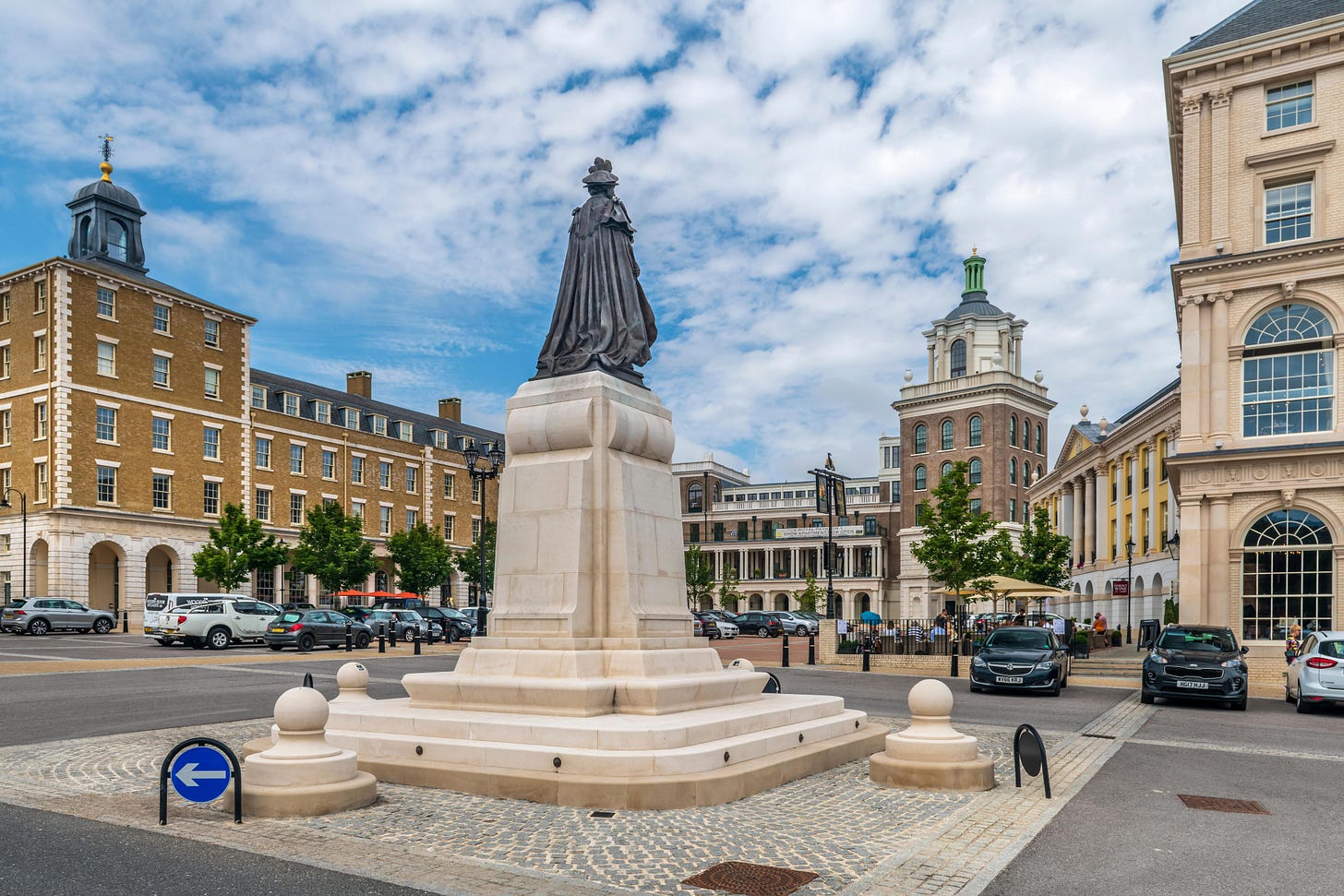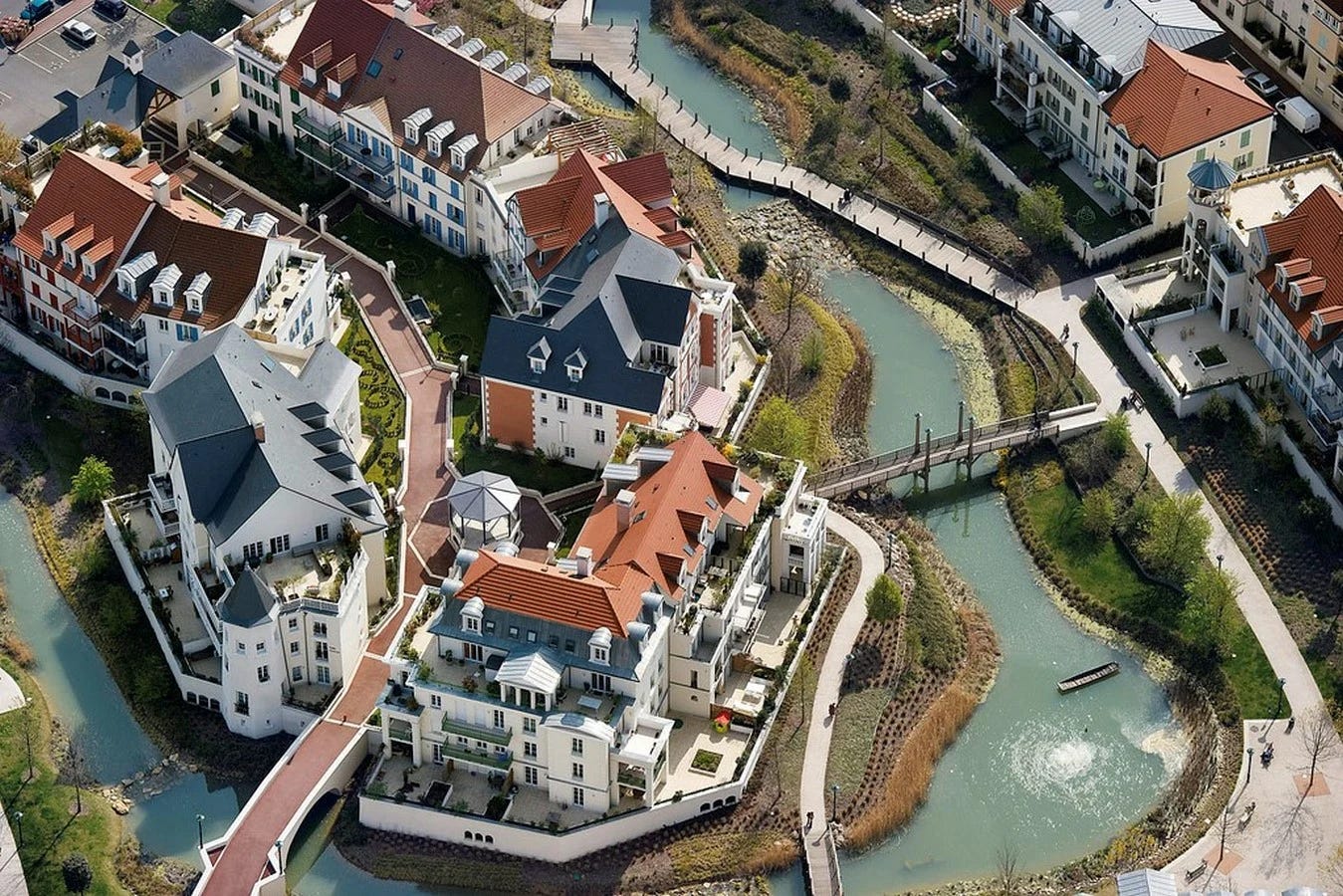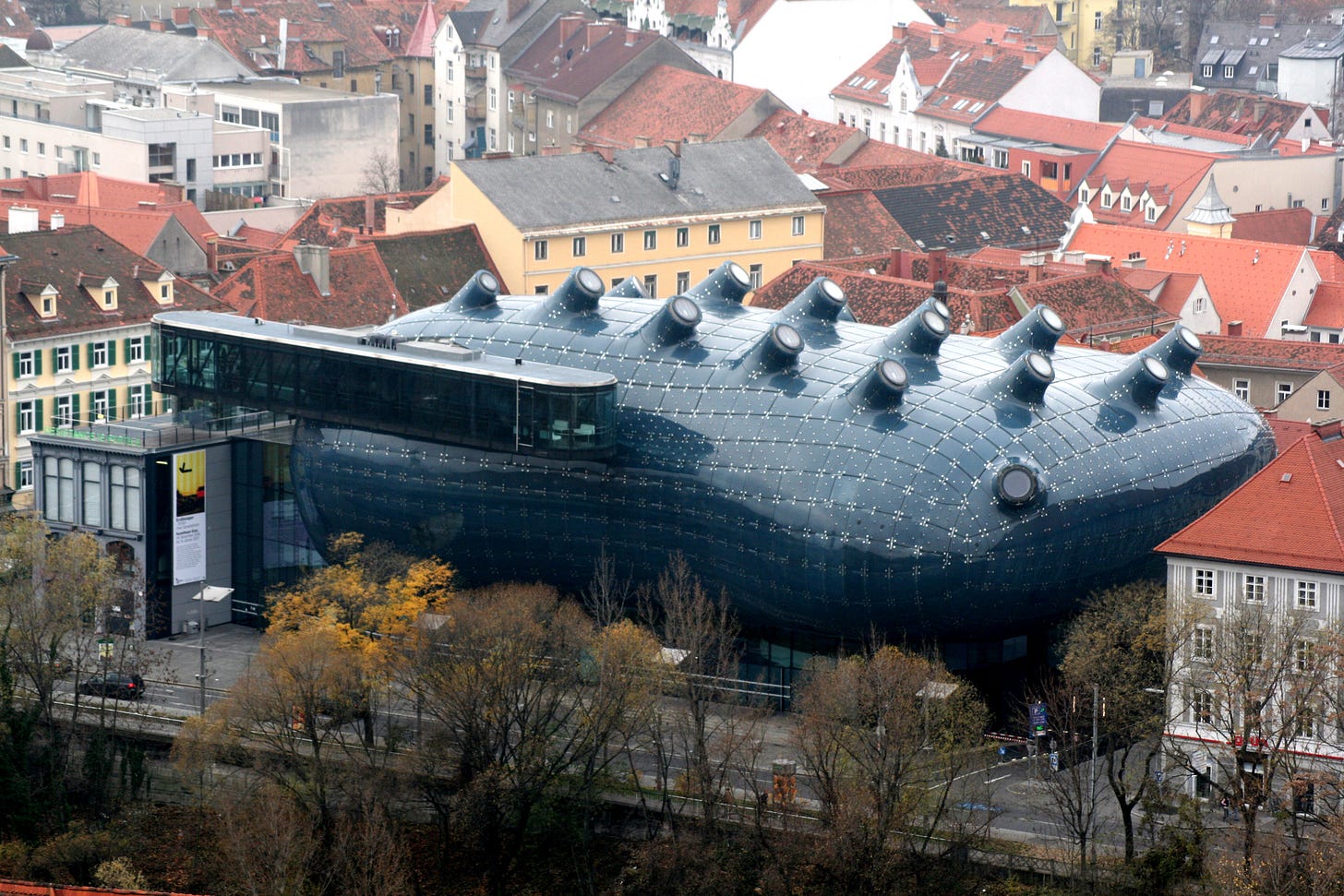What the tech industry needs to learn from New Urbanism
City design suffered from enshittification, but the people fought back. The same could happen in tech, but one key thing is missing.
If you follow my writings, then you’ll know I’ve been exploring the causes of enshittification and the various ideological factions responsible for it. You will also know that I believe that reducing the entire complex phenomenon of enshittification down to “those mean billionaires are to blame” is not just simplistic, but self-defeating. If you believe that the agents of techno-social rot are beyond accountability, then you have thrown in the towel. I have zero sympathy for this outlook.
If you need proof that enshittification can be defeated, then you need to expand your horizons beyond technology. Enshittification is a broadly applicable concept and it was ravaging public architecture before semiconductors even existed. But, the world of architecture is now showing signs of resistance. New de-shittified cityscapes are emerging, built from the ground up to be human-centric. These places are a model for how we can combat enshittification and win.
Brandevoort, Netherlands
Look at that inviting city space. You might think it's some historical neighborhood in Amsterdam, but no. It is an all-new town founded in 1997. It was designed after the pattern of fortified Dutch-style towns. Not only is it beautiful, but it is bike and pedestrian friendly, while still allowing cars where necessary. And, believe it or not, it’s affordable to live here despite the fact that it’s growing.
Poundbury, UK
Poundbury is a British town designed with traditional human-scale architecture in direct response to the ugly, car-centric postwar architecture of the UK. It is based on principles laid out by King Charles himself. It boasts spacious public squares and narrow streets that prioritize pedestrians. Property values in this town are 29% higher than surrounding areas.
Nansledan, UK
This 4000-home suburban development features mixed use zoning keeping businesses and residences well-integrated. Its cheerful pastel palette is based on traditional Cornish architecture. Its residents report high quality of life, and that is reflected in the property values which are higher than the surrounding area. As a bonus, the entire town is built with sustainable materials with a very low carbon footprint.
Les Plessis Robinson, France
This scenic town in France was once a hideous hellscape of 20th century concrete housing blocks looking like something out of Le Corbusier’s wettest dreams. Now it is composed exclusively of classical French architecture in a walkable layout with many public parks and a focus on biodiversity. Unemployment dropped while new businesses boomed. Property values now approach those of Paris, but that doesn’t mean the town is only for the rich. There is available social housing, and yet it’s impossible to tell just by looking which buildings are public and which are private.
Seaside, Florida
New Urbanism is not limited to Europe. This Florida suburb is unlike the sprawling subdivisions for which the region is infamous. All the houses are a vernacular coastal style, roads are narrow to encourage walkability and limit car travel to “get in and get out”, and architectural features like front porches and picket fences encourage an open, friendly culture rather than the fortress-like outlook of typical American suburbia. The town is a popular vacation destination and was even featured in the Truman Show because of its idyllic vision of Americana.
Enshittified cities
These new developments are genuinely loved by their residents. They are walkable, they minimize the need for cars, they encourage people to interact with others, and are pleasant to simply be in. They even have a smaller ecological footprint.
But, most important of all, they demonstrate that it’s possible for things to actually get better, that enshittification isn’t a one-way street, as so many helpless people seem to think it is.
To understand what these understated cityscapes really represent, you need to compare them to the alternatives that have blighted our world for almost a century.
Modernity
Tell Midjourney to represent a boot stomping on a human face forever in the form of architecture, and you would get a suburban subdivision like the one above. Or maybe you’d get a giant mall district with parking lots the size of San Marino flanked by shopping centers like hideous satellites. Or a generic American downtown with concrete and glass towers that, if you were dropped there in GeoGuessr, you couldn’t guess what city you were in if your life depended on it.
Despite the superficial differences in each of these environments, they are all interdependent components of a cultural-economic ecosystem that we could broadly call modernity. It despises beauty, it seeks the atomization of humans, and it optimizes for the funneling of capital from the masses into the tentacles of the few.
The fact that no culture comes out of subdivisions, malls, or clone cities is not a coincidence. They are designed to suppress innovation and indeed free thought while cleverly disguising themselves as bastions of individualism. Show me a person who enjoys living in a place like this, and I’ll show you a lobotomy patient.
Postmodernism
Perhaps the most odious of architectural movements is the one that treats public spaces as giant, open-air art galleries for egomaniacal celebrity architects to inflict their “visions” on the unconsenting populace. Imagine the entitlement it takes to presume that a charming Austrian town would be improved by a giant Cthulhu testicle
The people who design these buildings not only have no interest in creating aesthetic, pleasing buildings. They actively want to disrupt the harmony of the cityscape and they aren’t shy about saying so.
The Royal Ontario Museum, originally built in 1914, was defaced in 2007 by architect Daniel Libeskind with a monstrous protrusion of jagged metal and glass spikes. Of his abomination, Libeskind said “Why should one expect the new addition to the ROM to be ‘business as usual’? Architecture in our time is no longer an introvert’s business. On the contrary, the creation of communicative, stunning and unexpected architecture signals a bold re-awakening of the civic life of the museum and the city.”
To them, the city is a giant canvas on which they make their self-indulgent “statements” with zero regard for how anyone else feels.
“Smart” cities
What happens when property developers have more OPM than brain cells? You get “smart” cities. These are deliberate attempts to catapult humanity into a future that nobody asked for based on some fever dream of Blade Runner, The Minority Report, and Black Mirror. They attempt to solve every problem of urbanism with technology, no matter how half-baked. The more high-tech the solution, the more effective it must be.
Perhaps the least unhinged of these is Sidewalk Toronto, a “data-driven” neighborhood bristling with sensors and cameras, patrolled by autonomous vehicles, and managed by “digital governance”, whatever that means. On the opposite end of the spectrum is the infamous NEOM, which is a gargantuan complex of megaprojects including floating cities and a 1000 foot tall, 100 mile long mirror-faced wall with flying taxis so you can enjoy some 21st century AD technology with your 21st century BC theocracy.
It shouldn’t surprise you that both of these projects, not to mention countless others, failed. Billions of dollars wasted on something that only made sense to someone on a ketamine high.
How this relates to your tech
Each of those dystopian styles of urbanism have a direct correlate in technology design, as you have probably intuited.
Modernity is the garden variety, billionaire-driven enshittification. Giving you less while charging you more. Mining your data without letting you actually use it. Taking away the ability to customize your experience because the average Kenny G or Nickelback or Taylor Swift fan can’t think beyond the defaults. Using dark patterns to manipulate you into spending more money or giving up more privacy. It’s all just a digital recreation of the Modern lifestyle.
Postmodernism is driven by a different kind of elite. Instead of the economic elite, it is driven by the cultural elite. Those self-consciously ugly buildings in major urban centers were not designed to please people, but to actively make them uncomfortable. Their architects are more interested in showing off to other architects, and pranking the benighted masses with offensive buildings is their flex of choice. The cultural elite wield more influence in the design world than you might think.
The most obvious example is Apple who, despite their reputation as the “UX company”, have made actively anti-user design choices in the name of “art”. Why is the single most held object in the modern world not shaped for the human hand? And why is it made of glass? Then there is the UI design of iOS 7 which is not only flat to the point of harming usability, but painted in a childish, lurid color palette meaning that it reviles beauty as much as it does practicality. To quote GySgt Hartmann, it’s so ugly it could be a modern art masterpiece.
“Smart” cities are the only one of these which has failed to actually succeed in the real world, but the same cannot be said for their consumer tech counterparts. The techbros apply technology (and lots of it, unproven whenever possible) in order to solve every problem they encounter, whether those be problems of transportation or juice making.
We need the New Urbanism of tech
The reason those pleasant cityscapes succeeded is because they deliver what people what by using timeless, time-tested principles. They actively flout the naive techno-solutionism of “smart” cities, ivory tower degeneracy of postmodernism, and vicious crassness of modernity. As a result, people want to live there.
Things are going rather less well with consumer technology. Tech companies still insist on adding the latest tech fads to their products, whether that be internet connections or AI. They still harvest your data and sell it to the dregs of society while charging you for what they once gave away. And they still uncritically copy whatever Apple is doing.
There are a number of reasons that tech is behind in this respect. Municipal planning inherently falls more within the scope of public accountability than consumer devices or software, meaning that the people have one fewer tool in their belt for bending the world to their will. Introducing further regulation into technology is more likely to backfire than it is to succeed as the government is infamous for creating regulations that enforce worse products, not better.
But there’s another problem that is more solvable but less obvious. The fact is that we don’t even have a picture of what the “New Urbanism of tech” would even look like. I find it curious that the UX community as a whole isn’t creating concepts for what humanistic technology would look like. Given that our vertical is in a dire recession right now, and plenty of highly-qualified UX people are out of work, I can’t help but wonder why more interesting concepts aren’t appearing on my radar.
We shouldn’t even be concerned with how such ideas will be brought to life at this point. We simply need the ideas. We need them rendered in high-fidelity so that the public can see what is possible. We need to directly pitch these humanistic technology concepts to the world. The average consumer accepts the idea that they must use platforms to connect to people and content. They accept that they must carry around a noisy, uncomfortable, fragile rectangle in their pocket at all times. They accept that artificial intelligence means a jacked-up autocorrect that regularly and unapologetically makes stuff up. They just accept it because nobody has shown them that it can be different.
And if you don’t understand that showing is always better than telling, then you don’t belong in UX.
I've got some advice for you little buddy...










Before you point your finger you should know that I'm the man.
------------
(voice of Ricky Gervais) And the Oscar for "Most Dehumanizing And Yet Successful Architectural Movement" goes to (rips envelope) FUCK!!! Are you fucking kidding me? *takes a few deep breaths* The Oscar goes to The Value Engineering Aesthetic!
Sure, it's an abhorrent clusterfuck courtesy of large corporate real estate trusts. Of course, every last building built in the name of this so-called "aesthetic" is a cheaply built and provably unsafe structure that looks like a prison with a paint job. Yes, it's an elite slap-fight-level slap in the face of affordable housing and the people who need it. Absolutely an aggressive cancer, with no cure as of yet.
*security enters the room*
But who cares? Stop complaining and shut your Twinkie-scarfing pieholes. The rich are getting richer! That Is A Good Thing!
*security escorts Ricky offstage*
And Ricky can be heard yelling "And their wealth will trickle down to the rest of us, because they only have our best interests in mind!!1!1"
Enlightening and positive, imagine how quickly more of this crisp people centric vibe could sprawl if we weren’t spending so much on wet dreams!